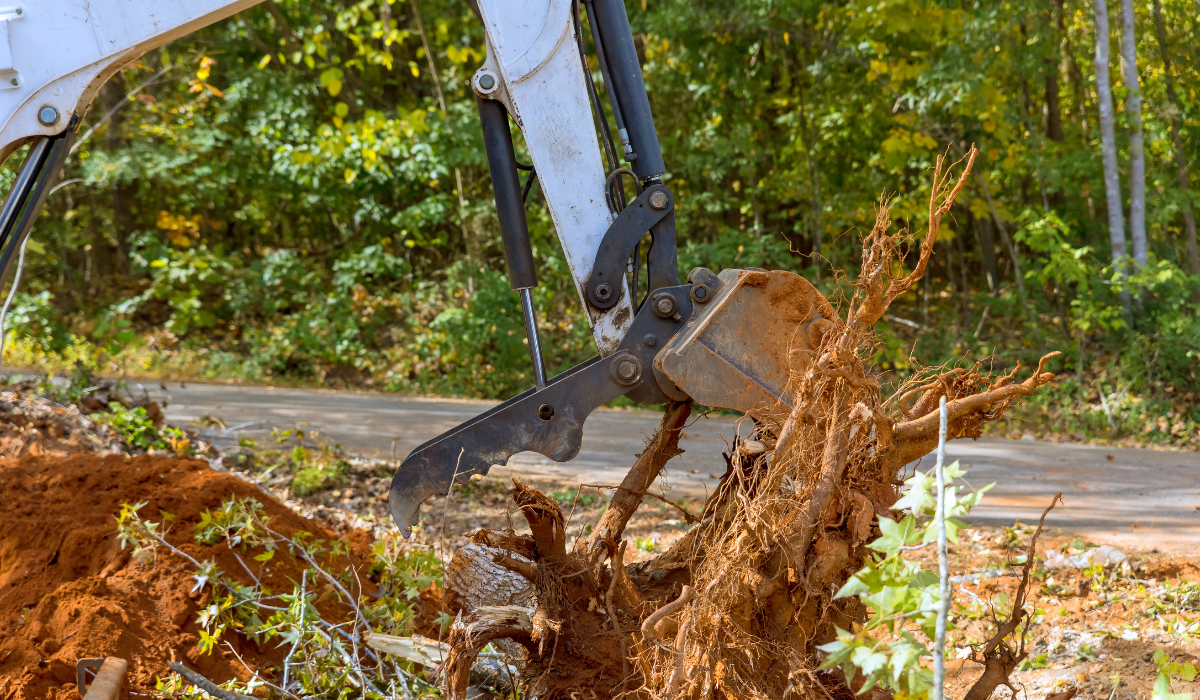Environmental Impact of Tree Removal and How to Mitigate It
Tree removal is sometimes unavoidable. Whether due to advanced disease, severe storm damage, safety hazards, or the need to clear space for development, the decision to fell a tree is rarely taken lightly. However, trees are far more than just landscape features—they are complex living systems that contribute significantly to environmental stability. Everything You Need to Know About Tree Removal involves recognising that removing one, especially a mature specimen, can have far-reaching ecological consequences.
In the UK, where urban development is steadily increasing and green spaces are under pressure, understanding these impacts is vital. By recognising the environmental cost of tree removal and applying responsible mitigation measures, we can ensure that necessary removals do not come at the expense of long-term ecological health.
Why Trees Are Environmentally Essential
Before we can fully grasp the consequences of removing a tree, it is important to recognise the many environmental functions trees perform:
- Carbon Sequestration and Climate Regulation – Trees absorb carbon dioxide during photosynthesis and store carbon in their wood and roots. Mature trees can store hundreds of kilograms of carbon, making them critical in the fight against climate change
- Air Quality Improvement – Urban trees filter harmful pollutants such as nitrogen dioxide, ozone, and fine particulate matter, improving public health.
- Biodiversity Support – From birds nesting in branches to insects sheltering in the bark, trees are essential habitats for countless species. Some trees even host rare or specialist wildlife that cannot thrive elsewhere.
- Soil Stabilisation – Roots hold soil together, preventing erosion and landslides, particularly on slopes or riverbanks.
- Water Cycle Regulation – Trees intercept rainfall, slow runoff, and reduce flooding risk. They also help groundwater recharge.
- Temperature Regulation – Canopies provide shade, lower local air temperatures, and combat the “urban heat island” effect.
The loss of even a single tree can create an immediate gap in these ecosystem services, a gap that may take decades to restore through replanting.
Environmental Consequences of Tree Removal
1. Loss of Habitat and Decline in Biodiversity
Many species rely entirely on mature trees for survival. Birds may lose nesting sites, bats may lose roosting cavities, and pollinators may lose a key nectar source. In fragmented urban areas, where green spaces are scarce, this habitat loss can cause lasting damage to local wildlife populations.
2. Carbon Release and Climate Impact
When a tree is felled, its stored carbon is gradually released into the atmosphere as the wood decays or is burned. This contributes directly to greenhouse gas emissions. Large-scale removals can have a measurable impact on local carbon balances.
3. Increased Soil Erosion and Water Runoff
Without root structures to bind soil, rainwater can wash away topsoil, leading to erosion. In towns and cities, this can also increase surface water runoff, putting extra strain on drainage systems and raising flood risks.
4. Altered Microclimates
Trees help regulate temperature and humidity. Their removal can lead to hotter summers and colder winters in the immediate area. Urban neighbourhoods with fewer trees often record higher summer temperatures, which can exacerbate heat stress in vulnerable populations.
5. Decline in Air Quality
Urban air quality suffers when tree cover decreases. Without foliage to trap airborne particles and absorb pollutants, concentrations of harmful substances can rise, affecting human health.
How to Mitigate the Environmental Impact
While the environmental impact of tree removal is significant, it can be reduced through careful planning and ecological responsibility.
1. Conduct a Professional Tree Assessment
Before removing a tree, always seek a qualified arboricultural inspection. A professional, such as a Middlesbrough tree surgeon, can determine whether the tree is genuinely beyond saving or if it can be made safe through pruning, crown reduction, or disease treatment.
2. Avoid Ecologically Sensitive Periods
In the UK, nesting bird season typically runs from March to August. Removing trees during this period risks disturbing active nests, which is an offence under the Wildlife and Countryside Act 1981. Delaying removal until late autumn or winter can help protect breeding wildlife.
3. Commit to Replanting and Habitat Restoration
For every tree removed, aim to plant at least one, preferably more, in suitable locations. Choose native species such as oak, beech, rowan, or birch, which support a wide range of UK wildlife. Where possible, plant a diversity of species to make future landscapes more resilient to pests and climate change.
4. Use Removed Timber Sustainably
Felled wood should not simply be discarded. It can be:
- Recycled into mulch to enrich soil.
- Used as sustainable fuel.
- Crafted into furniture or timber products.
- Left in sections to create “deadwood habitats” for insects, fungi, and small mammals.
5. Protect the Surrounding Environment During Works
Tree removal can cause collateral damage to nearby plants and soil. Mitigation steps include:
- Using low-impact equipment where possible.
- Installing protective barriers around nearby vegetation.
- Avoiding unnecessary soil compaction by machinery.
6. Offset the Carbon Loss
Support local or national carbon offset programmes, such as community woodland planting initiatives, to balance the emissions caused by removal.
Striking the Balance Between Safety and Sustainability
In many cases, tree removal is carried out to protect people and property. Diseased, dying, or structurally unsafe trees can pose real hazards, particularly in areas prone to storms. The key is to approach removal not as an isolated task but as part of a broader environmental management plan.
By working with experienced arborists such as a Middlesbrough tree surgeon, following seasonal wildlife guidelines, and committing to replanting and habitat restoration, it is possible to protect public safety while also preserving the ecological benefits that trees bring.
Ultimately, each tree removed should be replaced with new growth and biodiversity opportunities, ensuring that our towns, cities, and countryside remain green, healthy, and resilient for future generations.


Comments are closed